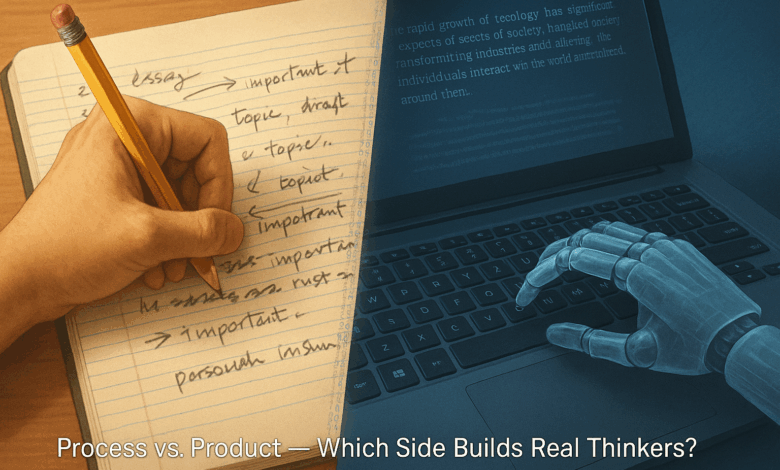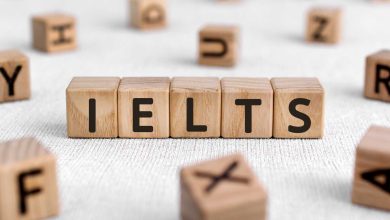
“We want to write essays for our final project. We love writing!”
Then, in the same breath: “Can we do something more creative and nontraditional instead?”
That moment in a university classroom changed everything one educator thought they knew about how students learn. These weren’t contradictory requests. They were strategic ones.
Students who claimed to love writing submitted work that, while technically skilled, felt hollow and lacked the authentic voice educators expected.
Then it became clear. They weren’t asking for essays because they wanted to write. They were asking because essays had become the easiest thing for AI to generate convincingly.
The “nontraditional” request was their escape route. A way to avoid assignments where the AI’s dependence might be apparent.
The Death of Process Questions
Once educators knew what to look for, the pattern became impossible to ignore.
Students stopped asking process questions entirely. Before AI, faculty inboxes filled with emails like “I’m struggling to connect these two ideas” or “Can you help me understand this concept better?”
Now the questions became purely logistical. “How long should this be?” “What format do you want?” “When is it due?”
During office hours, students arrived with completed drafts instead of rough ideas. They asked professors to “check if this works” rather than help develop their thinking.
The messy, iterative process of learning was no longer present. Students no longer wrestled with concepts, made mistakes, or gradually built understanding.
They had become strangers to their own academic voice.
The Faculty Group-Chat Alert
Conversations among educators across institutions revealed the widespread nature of this phenomenon.
At Loyola University of Maryland, a professor started requiring research notes and drafts because final papers came in too polished. “It’s like they’re handing me the final edit of a book when I assigned them to write a rough first chapter.”
American University colleagues shared that students were requesting extensions not for more thinking time, but to “personalize” their AI-generated content. They were scheduling time to make their work sound like themselves.
Howard Community College writing center tutors reported students asking how to “fix” papers that were technically perfect but felt utterly disconnected from the person sitting in front of them.
The problem extended beyond writing courses. Math professors found that students were submitting perfect problem sets but were unable to explain their methodology when asked.
The most shocking discovery: students were running their genuine writing through AI tools to “improve” it. They were training themselves out of their authentic voice.
What AI Detection Tools Revealed
AI detection tools exposed something more troubling than simple cheating. They revealed a generation that had developed nagging doubts about their intellectual abilities.
When educators flagged partially AI-generated papers, students responded with genuine confusion. “But I thought you wanted it to be good,” or “I was just trying to make it sound smarter.”
Educators discovered patterns researchers have termed “AI laundering.” Students would generate content with AI, run it through multiple tools to make it less detectable, then add personal touches.
However, what proved most troubling was that when educators showed students their original ideas versus AI-enhanced versions, they were often surprised to learn that their authentic writing was more compelling.
The tools became mirrors showing educators that students weren’t using AI to cheat. They were using it because they’d been convinced their natural thinking wasn’t sophisticated enough for academic work.
They had developed intellectual impostor syndrome. They believed AI was better at being them than they were.
The Data Behind the Crisis
The numbers confirm what educators are seeing in classrooms. Fifty-six percent of college students have used AI on assignments or exams, indicating rapid adoption across higher education.
More revealing: 40% of students say AI use defeats the purpose of education, yet they continue using it anyway. This paradox reveals the deep internal conflict students face.
They know they’re undermining their own learning while feeling compelled to compete.
Meanwhile, AI detection tools create their own problems. Research reveals a significant bias against non-native English speakers, with over half of their writing samples being misclassified as AI-generated.
This creates a system where the most vulnerable students face false accusations, while others successfully game the system.
Rebuilding Intellectual Confidence
The solution isn’t better detection tools or stricter policies. Educators need to rebuild students’ confidence in their thinking.
This means designing assignments that celebrate the messy process of learning, rather than focusing on polished final products. Students need to experience the value of their authentic intellectual voice.
Educators must create AI-resistant assessments that require higher-order thinking skills that AI struggles with. Critical analysis, creativity, and problem-solving are rooted in personal experience and local context.
Most importantly, educators need to show students what they’ve always known: their original ideas are more compelling than anything AI can generate.
The goal isn’t to eliminate AI from education. It’s to ensure students develop intellectual confidence alongside technological fluency.
The Path Forward
Students are reevaluating their education in light of what AI can offer them. Educators need to reverse-engineer their teaching around what only humans can do.
That means emphasizing process over product. Valuing authentic voice over artificial polish. Celebrating intellectual struggle over seamless solutions.
The generation using AI tools isn’t lazy or dishonest. They’re responding rationally to an educational system that hasn’t adapted to new realities.
The educator’s job isn’t to fight the technology. It’s to ensure students never lose faith in their capacity to think, create, and contribute something uniquely human to the world.
Because in the end, that’s what education has always been about. Not producing perfect papers, but developing authentic thinkers.
The AI revolution in education is inevitable. The question is whether educators will use it to enhance human thinking or replace it entirely.
The choice is still theirs to make.
Need process-based worksheets that can’t be outsourced to a bot? Grab our free draft-journey template at TeachersInstruction.com.”




